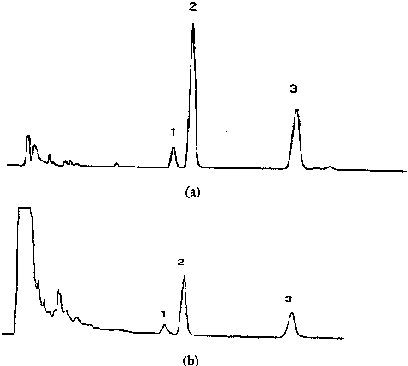
|
|
|
|

|
Home |
|
Capsaicin |
|
Analysis |
|
Scoville |
|
The Body |
|
Endorphins |
|
References |
|
Chilli fun |
|
Chilli Use |
|
Analysis |
|
Chemical Analysis of Chillies |
|
There has been much academic research into chillies. They are used in anti-mugging sprays, and medication for arthritis. |
|
The amount of capsaicinoids in a pepper can be determined by HPLC (High Performance Liquid Chromatography), using this method:
A chromatogram like this will be produced: |

|
Used without permission from the Trigeminal Response Page. For full details of procedure please visit this page. |
|
The various capsaicinoids have only recently been identified as individual compounds. This was done with GC-MS, a technique which allows the determination of the structure of individual compounds within a mixture. |
|
This method allows the amount of individual capsaicinoids to be determined. From this the pepper can be classified on the Scoville scale. The relative retention times of some capsaicinoids are: N-vanillyl-n-nonanamide, 1.00; nordihydrocapsaicin, 0.90; capsaicin, 1.00; dihydrocapsaicin, 1.58 |